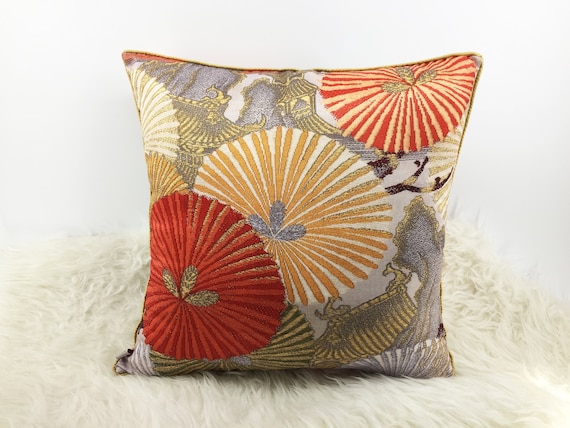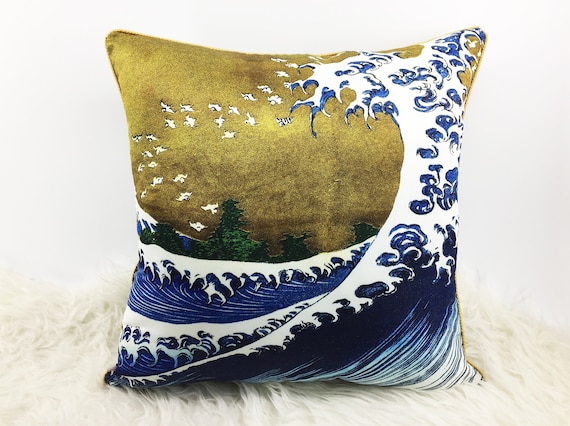Decorative pillows have the unique ability to transform a room. When infused with the elegance and artistry of Japanese design, these pillows become more than just comfort items; they become focal points that enhance the aesthetic of your living space. In this article, we’ll explore the world of Japanese decorative pillows, sharing insights, personal experiences, and practical tips to help you incorporate them into your home.
What Are Japanese Decorative Pillows?
Japanese decorative pillows, often referred to as “zabuton” or “hodai,” are traditional cushions that showcase Japan’s rich textile heritage. These pillows are typically characterized by their intricate patterns, vibrant colors, and high-quality fabrics, including silk, cotton, and linen. They serve various purposes, from providing comfort in a seating arrangement to adding a touch of elegance to your home’s decor.
The Cultural Significance of Japanese Pillows
In Japan, pillows are more than just decorative pieces; they have deep cultural roots. Historically, they were used to support the neck while sleeping on a tatami mat, but they have evolved into essential decor elements in modern Japanese homes. By integrating these pillows into your space, you not only enhance your decor but also bring a piece of Japanese culture into your home.
Why Choose Japanese Decorative Pillows?
There are numerous reasons to consider Japanese decorative pillows for your home decor:
- Unique Aesthetics: Japanese design emphasizes simplicity and beauty, making these pillows visually appealing.
- High-Quality Materials: Typically made from premium fabrics, Japanese pillows are durable and comfortable.
- Versatility: They can complement both traditional and contemporary decor styles.
- Artisanal Craftsmanship: Many Japanese pillows are handmade, reflecting a dedication to quality and craft.

Types of Japanese Decorative Pillows
Japanese decorative pillows come in various styles, each with their unique charm. Here’s a closer look at some popular types:
1. Zabuton
Zabuton are traditional Japanese floor cushions, often square in shape. They are typically used for seated meditation or relaxation. Zabuton are plush and comfortable, making them a favorite in living rooms and tea rooms.

2. Settee Cushions
Settee cushions are designed for sofas and chairs, providing both comfort and style. They may feature beautiful embroidery or intricate patterns, adding an artistic touch to your seating area.
3. Decorative Throw Pillows
These are smaller cushions that are perfect for layering on beds or sofas. They often feature striking designs such as cherry blossoms or cranes, making them eye-catching accents.

Comparison Table: Types of Japanese Decorative Pillows
| Type | Size | Material | Best Use |
|---|---|---|---|
| Zabuton | Large | Cotton/Silk | Floor seating |
| Settee Cushions | Medium | Cotton/Linen | Sofas/Chairs |
| Decorative Throw Pillows | Small | Cotton/Silk | Beds/Sofas |
Finding the Right Decorative Pillow for Your Home
When choosing Japanese decorative pillows, consider the following factors:

1. Color Palette
Japanese pillows come in various colors. Consider your existing decor and choose colors that complement your space. Soft pastels can create a calm atmosphere, while bold colors can add vibrancy.
2. Patterns and Designs
Common patterns include cherry blossoms, dragons, and geometric designs. Choose designs that resonate with you personally and reflect your style preferences.

3. Size and Shape
Think about where you’ll be placing the pillows. Larger pillows like zabuton are great for floor seating, while smaller throw pillows work well as accents on sofas or beds.
Pros and Cons of Japanese Decorative Pillows
| Pros | Cons |
|---|---|
| Unique and artistic designs | Can be pricey compared to regular pillows |
| High-quality materials | Some may require special care or cleaning |
| Versatile for different decor styles | Limited availability in local stores |

Incorporating Japanese Decorative Pillows Into Your Home Decor
Utilizing Japanese decorative pillows in your home is easier than you think! Here are some tips from my own experience:
1. Focus on Layering
Layer pillows of different sizes and shapes on your sofa or bed. Mix and match patterns for a more dynamic look, while ensuring the overall color palette remains cohesive.
2. Create a Zen Corner
If you enjoy meditation or relaxation, allocate a corner of your room with zabuton pillows. Complement this area with plants and soft lighting for a calming ambiance.
3. Use as Statement Pieces
Let a bold, patterned Japanese pillow stand out in your decor. This could be on a neutral sofa or a solid bedding set, making it the focal point of the room.
Frequently Asked Questions (FAQs)
What materials are commonly used for Japanese decorative pillows?
Japanese decorative pillows are often made from high-quality materials such as cotton, silk, or linen. Each material brings a different texture and look, so choose based on your preference and the intended use of the pillow.
How do I care for my Japanese decorative pillows?
Care instructions vary depending on the material. Cotton pillows can typically be machine washed, while silk may require dry cleaning. Always check the label for specific instructions to ensure longevity.
Can I use Japanese decorative pillows in a modern home decor?
Absolutely! Japanese decorative pillows can complement modern decor beautifully. The key is to select designs and colors that harmonize with contemporary aesthetics, creating a unique blend of styles.
Where can I buy authentic Japanese decorative pillows?
Look for specialty stores that focus on Asian decor or online retailers that specialize in Japanese home goods. Websites like Etsy, Amazon, or local import shops are often great places to find authentic pieces.
Conclusion
Incorporating Japanese decorative pillows into your home decor is a delightful way to express your style while embracing a rich cultural heritage. Whether you prefer the comfort of a zabuton for meditation or the charm of throw pillows with intricate designs, these pieces are sure to enhance your living space. With thoughtful selection and arrangement, you can create a beautiful, inviting home that reflects your personality and love for Japanese aesthetics.
By following this guide, you will be well-equipped to find the perfect decorative pillows for your home. Embrace the art of Japanese design and let your creativity flow!